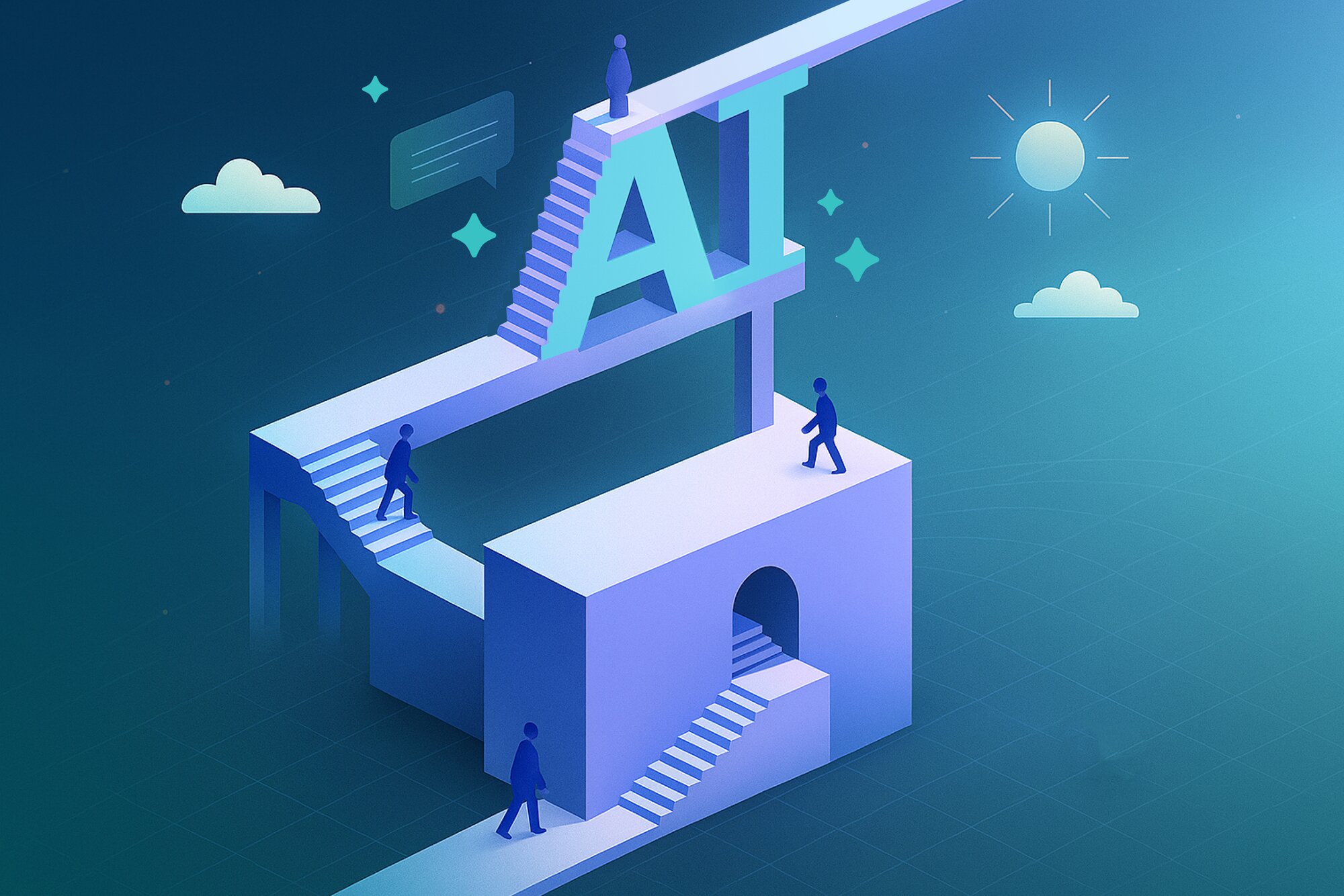AI in Software Development: Avoiding Pitfalls and Unlocking Long-term Potential
Strategic AI integration in software development that enhances productivity while preserving human expertise, creativity, and team collaboration.

As AI becomes more integrated into development workflows, its potential to transform how teams operate is undeniable. However, if adopted indiscriminately, AI can create long-term challenges, particularly in how teams collaborate, learn, and make decisions. These challenges are magnified in remote environments, where human connection and shared understanding are already at risk.
Drawing from our 13+ years of experience in fully-remote software solutions, expertise in AI integration and delivery processes, here are five key areas where AI’s impact demands thoughtful consideration - along with strategies we recommend to mitigate risks.
1. The Promise of AI-Powered Product Development
AI can streamline communication but may unintentionally make team interactions impersonal or isolating. Over-reliance on AI for tasks like emails, meeting notes, or ideation risks weakening collaboration and trust, especially in remote work settings and overall losing the invaluable personal touch.
What to Do:
- Treat AI as a facilitator, not a replacement, for meaningful interaction. Use it to automate repetitive tasks, but keep brainstorming and decision-making human-driven.
- Implement a framework for sharing AI explorations and use cases across the organization. Regular knowledge-sharing sessions or hackathons can encourage collective innovation and foster teamwork. AI should enhance collaboration, not isolate individual
2. Supporting Learning for Junior Team Members
AI’s ability to quickly provide solutions can hinder the development of foundational skills for junior team members. Without mastering essential skills, they risk becoming overly dependent on AI and unable to critically assess its outputs.
What to Do:
- Prioritize foundational learning before introducing AI to junior team members. Teach core skills like clean coding, debugging, and problem-solving first.
- Blend mentorship with AI tools, ensuring junior staff not only learn how to use AI effectively but also develop the critical thinking skills needed to refine and challenge its outputs.
3. Safeguarding Human Judgment and Creativity
AI excels at optimizing tasks, but over-reliance on it can erode the human qualities that drive innovation, such as strategic thinking, creativity, and nuanced decision-making. Teams may become complacent, accepting AI outputs uncritically, which can lead to formulaic outcomes and a loss of personal touch.
What to Do:
- Ensure your team includes experts who understand the domain deeply and can identify what “good” looks like. These individuals are essential for validating AI outputs and ensuring they meet quality, context, and strategic goals.
- Recognize that not all tasks benefit from AI. Avoid using it for areas requiring high levels of critical thinking, nuanced decision-making, or personal interaction, as indiscriminate use can add unnecessary complexity and dilute outcomes.
- Encourage team members to rely on their expertise to question AI’s suggestions critically, asking:
- “Does this align with our goals and context?”
- “Does this output reflect the standards we aim to uphold?”
- “How can we refine or improve this further?”
- Frame AI as a tool to enhance, not replace, the expertise of seasoned professionals. AI’s role should be to streamline workflows while ensuring decisions and outputs are guided by human judgment and creativity.
4. Highlighting and Addressing Data Issues
AI is only as good as the data it uses, and poor data hygiene can lead to inaccurate or misleading outputs. Teams may overestimate AI’s ability to work around flawed inputs, creating further challenges.
What to Do:
- Focus on structuring the unstructured data to make it usable for AI. This involves organizing and standardizing data inputs so AI systems can deliver meaningful and accurate outputs. Techniques such as data labeling, categorization, standardization and applying metadata can bridge the gap between raw and actionable data.
- Establish a virtuous cycle where AI outputs feed back into improving data processes. For example:
- Use AI to identify inconsistencies or gaps in the data.
- Refine the data based on these insights.
- Reintegrate the improved data to enhance AI performance over time.
- Foster a culture of accountability, where teams view errors or inconsistencies not as setbacks but as opportunities to refine both data and processes. High-quality data enhances AI’s effectiveness and reinforces precision and trust within the team.
5. Establishing an AI Usage Framework
Without clear policies, teams may misuse AI, leading to inefficiencies, privacy issues, or unintended reliance on the tool. A structured framework can help organizations maximize AI’s benefits while minimizing risks.
What to Do:
- Define AI’s role in achieving organizational goals, is it fostering innovation or improving efficiency/productivity?
- Set clear boundaries, including tasks AI should and should not handle (e.g., sensitive client interactions or high-stakes decisions).
- Specify preferred tools and who should or should not use them.
- Ensure compliance with privacy regulations, to prevent potential breaches.
- Offer hands-on training sessions or hackathons to help employees understand how LLMs work, how they can directly enhance their day-to-day work while maintaining control and transparency.
Conclusion
Striking the right balance between AI integration and human expertise is essential for sustainable success. AI holds immense promise for improving team efficiency and productivity. However, its long-term success requires thoughtful adoption. By fostering collaboration, prioritizing foundational learning, addressing data issues, safeguarding human judgment, and implementing a clear AI usage framework, organizations can ensure AI strengthens their teams rather than undermining them.
The key is to view AI as a powerful tool to amplify—not replace—human expertise, creativity, and trust. When implemented strategically, AI can transform development workflows while preserving the personal connections, critical thinking, and innovation that drive exceptional software delivery, particularly in remote environments where these elements are already challenged.

